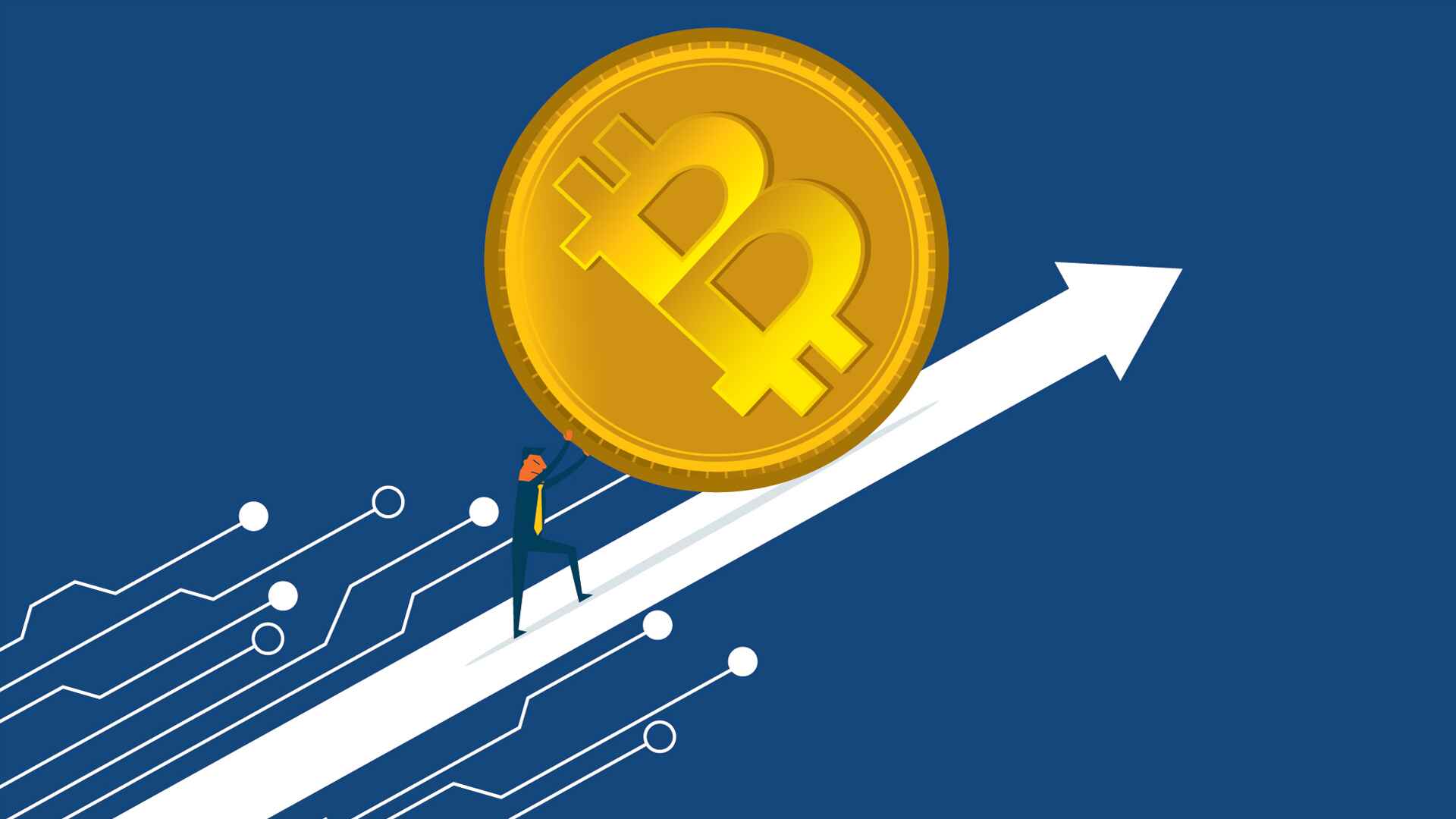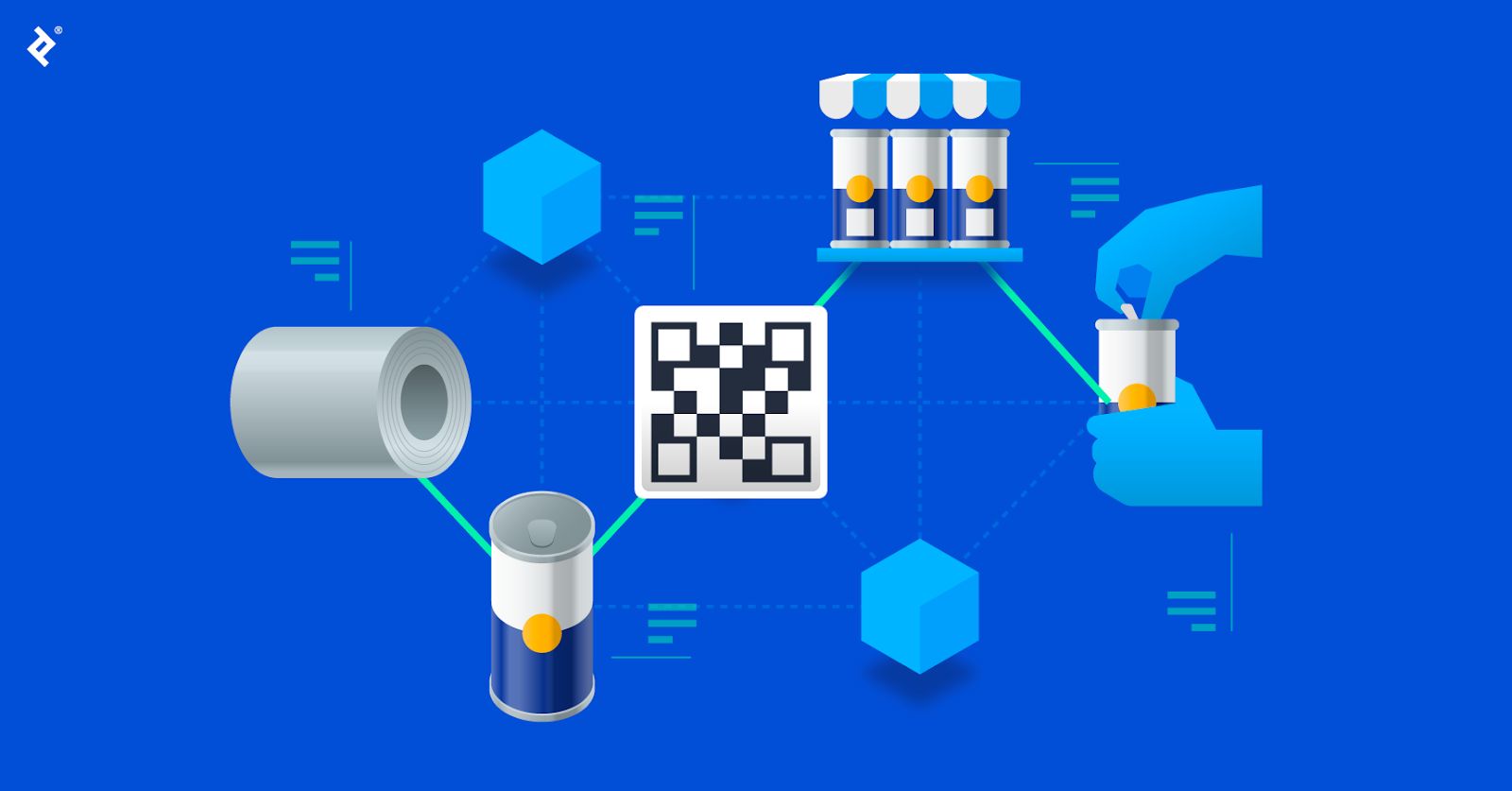Introduction
Welcome to the fascinating world of blockchain technology! In recent years, blockchain has gained significant attention across various industries for its potential to revolutionize the way we transact and exchange information in a secure and transparent manner. One of the fundamental building blocks of a blockchain is the “block,” which forms the backbone of the entire system.
In this article, we will explore the concept of blocks in a blockchain and delve into the intricacies of the first block ever created in a blockchain. We will examine the naming conventions for this initial block, the special features it possesses, and its significance in the blockchain ecosystem.
But before we dive into the technical details, let’s understand what exactly a blockchain is and how it functions.
A blockchain is essentially a decentralized digital ledger that records transactions, tracks assets, or documents in a transparent and secure manner. It is made up of a network of computers (nodes) that work together to validate, authenticate, and store each transaction in a chronological order. These transactions are grouped into blocks, which are then linked together in a chain-like structure.
Each block in a blockchain contains a batch of transactions, along with a unique identifier called a cryptographic hash. The hash is generated based on the contents of the block and is crucial for maintaining the integrity and immutability of the blockchain.
What is a blockchain?
A blockchain is a distributed and decentralized digital ledger that enables the secure tracking and recording of transactions or information. Unlike traditional centralized systems, where a single authority controls and manages the database, a blockchain operates in a peer-to-peer network of computers or nodes.
The blockchain technology was first introduced in 2008 with the advent of Bitcoin, the world’s first cryptocurrency. However, its applications have since expanded beyond digital currencies to various industries, including finance, supply chain management, healthcare, and more.
At its core, a blockchain is a series of individual records, called blocks, linked together in a chronological order to form a chain. Each block contains a set of transactions, data, or smart contract information, which is secured using advanced cryptographic techniques.
One of the key features of a blockchain is its immutability. Once a block is added to the chain, it becomes extremely difficult to alter or tamper with the data stored within it. This is achieved through the use of cryptographic hashes that uniquely identify each block and the information it contains. Any change made to a block would require recalculating the hash and updating subsequent blocks, making it computationally infeasible to manipulate the blockchain’s history.
The decentralized nature of a blockchain ensures that no single entity has complete control over the network, making it resistant to censorship and single points of failure. By distributing the ledger among multiple nodes, participants in the network collectively maintain and validate the integrity of the blockchain.
Another notable characteristic of blockchains is transparency. All transactions or information stored on the blockchain are visible to all participants within the network. This fosters trust and accountability, as anyone can independently verify the validity of transactions and the state of the blockchain.
The combination of decentralization, immutability, and transparency makes blockchains an attractive solution for various use cases. Whether it’s eliminating intermediaries, improving auditability, enhancing data security, or streamlining complex processes, the versatility of blockchain technology is promising.
As the technology continues to evolve and mature, new blockchain platforms and protocols are emerging, each with its own features and capabilities. From public blockchains like Bitcoin and Ethereum to private and consortium blockchains used by businesses, the potential applications of blockchain technology are vast and far-reaching.
What is a block in a blockchain?
A block is a fundamental component of a blockchain, consisting of a collection of data and information that is grouped together and added to the chain. It serves as a container for transactions, records, or any other relevant data that needs to be stored in the blockchain.
Typically, a block contains several key elements:
- Block Header: The block header contains essential metadata about the block, such as a unique identifier, timestamp, and the cryptographic hash of the previous block in the chain. This hash serves as the link that connects the blocks together, forming the blockchain.
- Transactions or Data: This section includes the actual data or transactions that are being added to the blockchain. In the case of a cryptocurrency blockchain, these transactions represent the movement of digital assets from one account to another. For other use cases, this data could include information about supply chain events, medical records, or any other type of record that needs to be stored securely and transparently.
- Nonce: A nonce is a random number that is generated during the process of mining a block. It is used in combination with other elements of the block to satisfy certain mathematical conditions, specifically the proof-of-work algorithm. This process helps to ensure the security and integrity of the blockchain.
Once a block is created, it is added to the existing chain of blocks, forming a linear sequence. Each block within the chain contains a reference to the previous block’s cryptographic hash, creating a link between them. This linkage ensures the immutability of the blockchain, as any modification to a single block would require altering the hash of all subsequent blocks.
The size of a block can vary depending on the specific blockchain protocol, but each block is designed to hold a limited amount of data. This limitation helps ensure the efficiency and scalability of the blockchain network. In some cases, when the block reaches its maximum capacity, a new block is created to accommodate additional transactions or data, continuing the chain.
The creation and addition of blocks to the blockchain are typically governed by a consensus mechanism, which ensures that all participants in the network agree on the validity of the transactions and the order in which they are added to the blockchain. Common consensus mechanisms include proof-of-work (PoW) and proof-of-stake (PoS).
Overall, the concept of a block is integral to the functioning of a blockchain. It serves as a container for data, transactions, and other relevant information, and forms the building blocks of the chain that powers the decentralized, secure, and transparent nature of blockchain technology.
The first block in a blockchain
The first block in a blockchain, often referred to as the “genesis block,” holds a special significance in the overall structure and history of the blockchain. It serves as the foundation upon which the entire blockchain is built and establishes the initial state of the network.
The genesis block is unique in several ways:
- Naming conventions: The first block in a blockchain is commonly referred to as the genesis block. However, different blockchain platforms may have their own naming conventions for this initial block.
- Block features: The genesis block often possesses distinctive features that distinguish it from subsequent blocks in the chain. These features can include a specific timestamp, a custom message, or a unique identifier.
Creating the genesis block involves a careful and deliberate process. It lays the groundwork for the subsequent block creation and sets the initial parameters and rules for the blockchain network.
The genesis block usually contains a hardcoded or pre-defined set of data and cannot be generated through the standard transaction validation process. It acts as the starting point for the chain and is typically created by the blockchain’s creator or developers.
One important aspect of the genesis block is the cryptographic hash that is assigned to it. The hash of the genesis block serves as the reference point for the subsequent blocks in the chain. This linkage ensures the integrity and immutability of the blockchain, as any change to the genesis block would invalidate the entire history of the blockchain.
Furthermore, the genesis block often serves as the entry point for the initial distribution of cryptocurrency tokens or assets within the blockchain network. It can specify the initial allocation of tokens or contain rules for the distribution and issuance of assets.
The creation of the genesis block marks the birth of a new blockchain network and lays the foundation for its operation. It signifies the beginning of a ledger where all subsequent transactions and data will be recorded and verified.
Overall, the first block, or the genesis block, holds a special place in the blockchain ecosystem. It serves as the starting point for the chain, establishes the initial parameters of the network, and sets the stage for the secure and transparent recording of transactions and information in the subsequent blocks.
Naming conventions for the first block
When it comes to naming the first block in a blockchain, different platforms and projects have adopted various naming conventions. While the most commonly used term is “genesis block,” some blockchain networks have chosen unique names to give prominence to this initial block.
Let’s explore some of the naming conventions that have emerged:
- Genesis block: This is the most widely recognized term used to refer to the first block in a blockchain. It signifies the beginning of the chain and sets the foundation for the subsequent blocks.
- Block zero: Some blockchain projects use the term “block zero” to describe the initial block. This naming convention provides a clear and logical reference to the block’s position in the chain.
- Block one: Another naming convention seen in certain blockchain networks is to refer to the first block as “block one.” This convention is often used when the genesis block has unique characteristics or features that distinguish it from subsequent blocks.
- Alpha block: In some cases, the first block is named the “alpha block.” This term suggests that the block represents the beginning or the first stage of development in the blockchain network.
- Origin block: The name “origin block” is occasionally used to emphasize the fact that the first block serves as the starting point and the origin of the entire blockchain network.
It’s important to note that while the naming conventions may vary, the underlying concept and significance remain the same. The first block establishes the initial state of the blockchain and serves as a crucial component in maintaining the integrity and continuity of the chain.
By bestowing special names upon the first block, blockchain projects aim to highlight the importance and unique characteristics associated with this initial piece of the puzzle. These naming conventions provide an additional layer of recognition and distinction within the blockchain community.
Ultimately, regardless of the naming convention used, the first block or the genesis block plays a vital role in the blockchain ecosystem. It serves as the starting point, defines the initial parameters of the network, and establishes the groundwork for the secure and transparent recording of transactions and data in subsequent blocks.
Genesis block features
The genesis block, being the first block in a blockchain, often possesses unique features that distinguish it from subsequent blocks in the chain. These features can vary depending on the specific blockchain platform and the goals of the network’s creators. Let’s explore some of the common features found in genesis blocks:
- Special timestamp: The timestamp of the genesis block is significant as it marks the beginning of the blockchain network. This timestamp represents the specific date and time when the first block was created, laying the foundation for the entire chain.
- Custom message: Some blockchain networks include a custom message within the data of the genesis block. This message can serve various purposes, such as commemorating the launch of the network, expressing the motivations behind the project, or simply conveying a unique and memorable statement.
- Unique identifier: The genesis block typically has a unique identifier that distinguishes it from all other blocks in the chain. This identifier could be a specific hash or a designated number that signifies the first block’s position within the blockchain.
- Allocated cryptocurrency: In many cases, blockchain networks that are built for cryptocurrencies allocate a specific amount of the respective currency within the genesis block. This initial allocation establishes the initial distribution of tokens and lays the foundation for the cryptocurrency’s economy within the blockchain network.
- Initial parameters: The genesis block often sets the initial parameters and rules for the blockchain network. This includes details such as the block size, the consensus mechanism, the difficulty level, or any other specifications that may be unique to the blockchain platform.
These genesis block features serve several purposes within the blockchain ecosystem. They not only represent the beginning of the chain but also provide historical context and essential information about the network’s initial state. The unique characteristics of the genesis block hold significance and sentimental value for the blockchain community.
It’s important to note that while some features are commonly found in genesis blocks, each blockchain project has the flexibility to define their own specific features based on their goals, functionality, and vision. These features ensure individuality and give each blockchain network its own distinct identity within the broader blockchain ecosystem.
Overall, the genesis block features help establish the foundation of a blockchain network, shape its initial parameters, and commemorate its beginning. They play a significant role in defining the uniqueness and historical context of the blockchain, serving as a symbol of its evolution and growth over time.
How is the first block created?
The creation of the first block, also known as the genesis block, in a blockchain is a critical step in establishing the foundation of the network. The process of creating the genesis block differs from the creation of subsequent blocks in the chain. Let’s explore how the first block is created:
1. Design and development: The first step in creating the genesis block involves the design and development phase. The blockchain’s creators or developers define the specific characteristics, parameters, and rules that will govern the network. This includes determining the block size, consensus mechanism, cryptographic algorithms, and any other unique features for the blockchain.
2. Hardcoding or manual creation: Unlike subsequent blocks that are generated through the validation of transactions, the genesis block is often hardcoded or manually created. This means that the block’s information, including the data, timestamp, and unique identifier, is predetermined and inserted directly into the blockchain’s code or configuration.
3. Setting the cryptographic hash: Another crucial aspect of creating the genesis block is setting its cryptographic hash. The hash is calculated based on the block’s data and serves as a unique identifier and reference for subsequent blocks in the chain. The integrity of the blockchain relies on the hash of the genesis block, as any modification to the block would require altering the hashes of all subsequent blocks, making it computationally infeasible to tamper with the blockchain’s history.
4. Allocating initial cryptocurrency: In many blockchain networks, especially those that are built for cryptocurrencies, the genesis block includes the allocation of an initial amount of the respective cryptocurrency. These tokens are often distributed to the blockchain’s creators, early adopters, or designated entities. This allocation establishes the initial distribution and serves as the starting economic point for the blockchain’s digital currency.
5. Launching the network: Once the genesis block is created, the blockchain network is ready to be launched. Nodes can be set up, and participants can start joining the network to mine new blocks, validate transactions, or interact with the blockchain. The creation of the genesis block marks the birth of the network and sets the stage for the blockchain’s growth and evolution.
The process of creating the first block in a blockchain is an important step in establishing the network’s initial state and parameters. It involves careful design, manual or hardcoded creation, and the allocation of initial resources. The genesis block sets the stage for subsequent block creation and forms the foundation upon which the entire blockchain ecosystem is built.
Why is the first block important?
The first block in a blockchain, also known as the genesis block, holds significant importance within the blockchain ecosystem. It serves as the cornerstone of the entire blockchain network and carries several key reasons why it is crucial:
1. Establishing the foundation: The genesis block sets the foundation for the entire blockchain. It represents the starting point from which all subsequent blocks are built upon. The creation of the genesis block marks the birth of the blockchain network and defines its initial state, parameters, and rules.
2. Ensuring integrity: The cryptographic hash assigned to the genesis block ensures the integrity and immutability of the blockchain. Any modification made to the genesis block would require altering the hashes of all subsequent blocks, making it practically impossible to tamper with the chain’s history. Therefore, the accuracy and integrity of the first block play a crucial role in maintaining the trustworthiness of the entire blockchain network.
3. Setting initial distribution: In many blockchain networks, the genesis block includes the initial allocation of cryptocurrency tokens or assets. This allocation defines the initial distribution of the digital currency and lays the foundation for the blockchain’s economic system. The first block’s distribution mechanism can impact the network’s adoption, incentive structure, and overall ecosystem development.
4. Unique characteristics: The genesis block often possesses unique features, such as a distinct timestamp, a custom message, or a special identifier. These characteristics distinguish it from subsequent blocks and provide historical context and significance to the network’s inception. The special attributes of the first block make it a memorable and meaningful component of the blockchain network.
5. Starting point for transactions: The creation of the genesis block marks the beginning of transaction recording on the blockchain. All subsequent transactions, data, or records are added to the chain based on the foundation laid by the first block. The genesis block serves as the entry point and starting reference for the chronological order of transactions, ensuring the transparency and traceability of the blockchain’s history.
6. Symbolic representation: The genesis block holds symbolic value within the blockchain community. It represents innovation, progress, and the start of a transformative technology. The creation of the first block is often celebrated, and it holds sentimental and historical significance for both the creators of the network and the participants involved.
Overall, the first block, or the genesis block, holds immense importance in establishing the foundation, integrity, and initial distribution of a blockchain network. It serves as the starting point for subsequent block creation, represents the uniqueness of the network’s inception, and carries symbolic significance within the blockchain community.
Conclusion
The first block in a blockchain, known as the genesis block, plays a pivotal role in the overall structure and functionality of the blockchain network. It sets the foundation, establishes the initial parameters, and lays the groundwork for the secure and transparent recording of transactions and information in subsequent blocks.
Through careful design, hardcoding, and the allocation of initial resources, the genesis block embodies the beginning of the blockchain journey. It holds unique features, such as a special timestamp, a custom message, or a distinct identifier, that make it stand out from other blocks in the chain.
The creation of the genesis block carries significance beyond its technical aspects. It represents the birth of a new blockchain network, symbolizing innovation, progress, and the transformative power of decentralized technologies.
The genesis block’s cryptographic hash ensures the integrity and immutability of the entire blockchain, making it virtually tamper-proof. It establishes the link between blocks and forms a trustless and transparent system where information flows securely.
Furthermore, the first block often includes the initial allocation of cryptocurrency tokens or assets, setting the stage for the blockchain’s economic system. These tokens serve as the starting point for transactions and shape the network’s incentive structure and adoption.
Overall, the creation of the genesis block marks the beginning of a blockchain network’s journey towards decentralization, security, and transparency. It holds historical and sentimental value, representing a significant milestone for both the creators and participants of the blockchain ecosystem.
As blockchain technology continues to evolve, the genesis block will continue to hold its unique importance, reminding us of the power of decentralization in reshaping industries and redefining trust in the digital age.

























